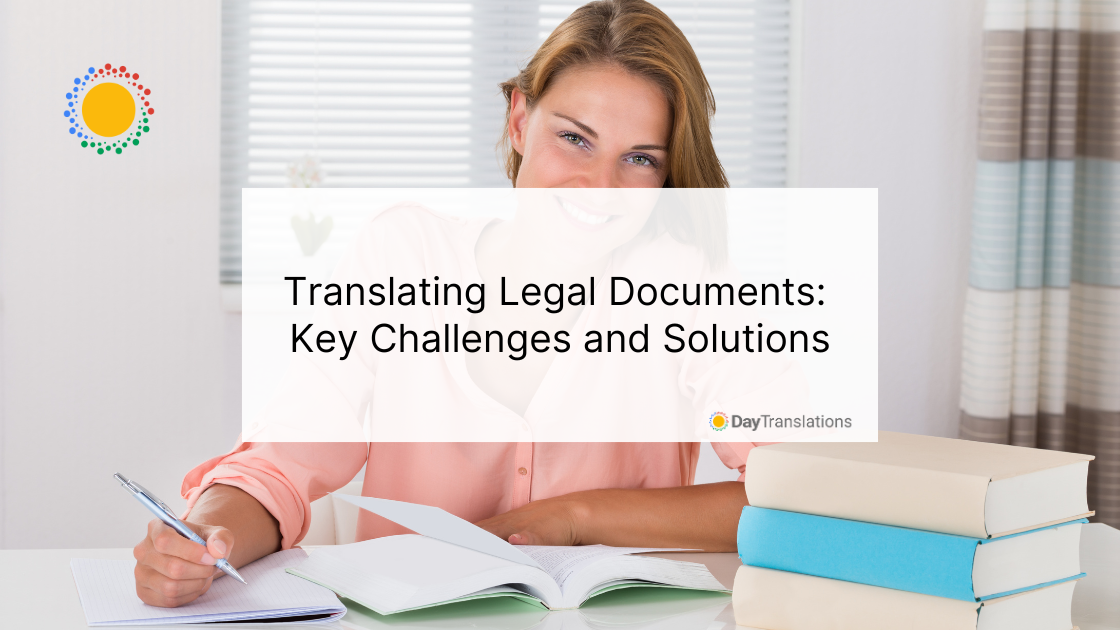Translating legal documents can be like walking through a maze. It’s full of twists and turns, and getting lost is easy if you don’t know what you’re doing. But don’t worry! In this article, we’ll explore the key challenges of translating legal documents and the solutions to make the process smoother. Let’s dive in!
The Importance of Legal Document Translation
Legal documents, such as contracts, wills, patents, and court documents, are crucial in our everyday lives. Accurate translation services for documents are essential because even a small mistake can lead to big problems, such as misunderstandings, financial losses, or legal issues.
Key Challenges in Translating Legal Documents
1. Language Differences
Every language has its unique structure and vocabulary. Legal terminology can be especially tricky. For example, the word “law” might translate differently depending on a country’s legal system. This can create confusion if not handled correctly.
Solution: Specialized Translators
To tackle this challenge, it’s best to use translators who specialize in legal translations. They understand the nuances of legal language and can accurately translate terms and phrases.
2. Cultural Differences
Legal systems vary widely between countries. What’s legal in one country might not be legal in another. This means that cultural differences must be considered when translating legal documents.
Solution: Cultural Awareness
Translators should be aware of the cultural context of both the source and target languages. This awareness helps ensure that the translation is not only accurate but also culturally appropriate.
3. Maintaining Legal Integrity
Legal documents must be precise and unambiguous. Any error can alter their meaning and potentially have serious consequences. This challenge concerns preserving the document’s legal integrity during translation.
Solution: Quality Control
Implementing rigorous quality control processes, such as proofreading and using translation memory tools, can help maintain the document’s integrity. These tools ensure consistency and accuracy throughout the translation.
4. Confidentiality
Legal documents often contain sensitive information. Ensuring confidentiality during the translation process is a significant challenge.
Solution: Secure Processes
Sensitive information can be protected by using secure and confidential translation processes, including encrypted communication and non-disclosure agreements (NDAs).
5. Formatting and Presentation
Legal documents have specific formatting and presentation requirements. It is crucial to ensure that the translated document matches the original format.
Solution: Attention to Detail
Translators should pay close attention to the formatting and layout of the original document. Using advanced word processing tools can help maintain the same format in the translated version.
Common Legal Documents and Their Specific Challenges
Contracts
Contracts are agreements between parties. They must be clear and precise to avoid misunderstandings. The challenge lies in translating legal jargon and ensuring that all terms are legally binding in the target language.
Court Documents
Court documents include judgments, pleadings, and briefs. They require a thorough understanding of legal procedures and terminology. Accuracy is paramount to avoid misinterpretation in legal proceedings.
Patents
Patents protect inventions and must be detailed and specific. Translating patents requires specialized knowledge of technical terms and legal language to ensure the patent’s validity in different jurisdictions.
Wills and Testaments
Wills and testaments outline how a person’s assets will be distributed after their death. They must be clear to prevent disputes among heirs. Translators must ensure that the translated document reflects the original’s intent accurately.
Best Practices for Translating Legal Documents
Use Specialized Translators
As mentioned earlier, using translators with expertise in legal translation is crucial. They have the necessary skills and knowledge to handle complex legal terminology.
Implement Quality Control
Quality control processes, such as proofreading, editing, and using translation memory tools, ensure accuracy and consistency. Regularly reviewing these processes helps maintain high standards.
Ensure Cultural Competence
Understanding cultural differences helps translators produce documents that are not only accurate but also culturally appropriate. This is particularly important for legal documents that must be valid in different legal systems.
Protect Confidentiality
Implementing secure translation processes, such as encrypted communication and NDAs, helps protect sensitive information. Translators should be trained in handling confidential documents.
Maintain Formatting
Paying attention to the formatting and layout of the original document ensures that the translated version is easy to read and understand. Advanced word processing tools can help achieve this.
Final Thoughts
Translating legal documents is a complex task that requires specialized knowledge, attention to detail, and cultural awareness. Translators can produce accurate and reliable translations by understanding the key challenges and implementing effective solutions. Whether it’s a contract, court document, patent, or will, the goal is to ensure that the translated document is just as clear and legally binding as the original. So, next time you need a legal document translated, remember these tips to navigate the maze successfully!












Sorry, the comment form is closed at this time.